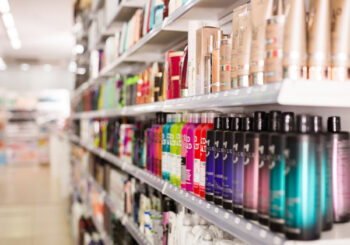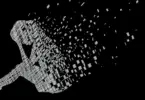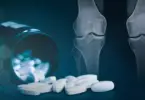Contributing writer for Wake Up World
Unfortunately, just because it’s sold over-the-counter does not mean a product is safe for you. In fact, of the nearly 13,000 chemicals used in cosmetics, only 10% have been tested for safety. While the U.S. Food and Drug Administration (FDA) has the authority to regulate ingredients in cosmetics and personal care products, they often do not exercise it.1
Adding insult to injury, the FDA tasks companies manufacturing and marketing cosmetics with ensuring their safety. Not only is this an obvious conflict of interest, but “neither the law nor FDA regulations require specific test to demonstrate the safety of individual products or ingredients.”2
So, while cosmetic companies are responsible for substantiating safety, there are no required tests and the companies do not have to share safety data. In fact, the FDA isn’t even authorized to order recalls of hazardous chemicals from the market.
Cosmetic3 companies may also fall back on a loophole in the Fair Packaging and Labeling Act,4 which allows companies to withhold information relating to “trade secrets,” under which fragrances and flavor ingredients fall.5
Participating with Environmental Defense and other U.S. groups, the Breast Cancer Prevention Partners (BCPP) tested personal care products and cleaning products sold at major Canadian retailers in order to identify undisclosed fragrance ingredients.6 A lack of federal regulation in Canada and the U.S. results in an increased risk of exposure to consumers.
Your Right to Know
The Campaign for Safe Cosmetics, a project of the BCPP, is a broad-based national coalition of nonprofit organizations whose mission it is to protect the health of consumers by securing reforms necessary to eliminate dangerous chemicals linked to adverse health effects.7
The research project was triggered by scientific literature and prior product testing indicating chemicals linked to cancer, birth defects, endocrine disruption and other adverse effects were used heavily in beauty, personal care and cleaning products.
However, despite research evidence, there continues to be a lack of legislatively mandated labeling requirements, leaving consumers uninformed of the dangers in products they bring into their homes every day. For this test, BCPP and their partners purchased 140 different beauty, personal care and cleaning products for testing.
Of particular concern were products marketed to children, women of color and products marketed by celebrities as “good for the environment” or “green.” One of the more concerning results was that many of the personal care products tested contained more hazardous chemicals than the cleaning products.8
Millions of dollars and countless hours of lobbying have been poured into the industry’s fight against legislatively mandated ingredient disclosure. Fragrance is a big business as they are used in personal care products and cleaning products.
The value of the North American flavor and fragrance market is nearly $6 billion and forecast to reach $7.42 billion by 2020.9
Top 10 Most Hazardous Products Tested
The fragrance industry has nearly 4,000 fragrance chemicals at its disposal, which companies are not mandated to disclose. BCPP hired two independent third-party testing laboratories. The first assessed volatile organic compounds and the other performed two-dimensional gas chromatography on a subset of 32 products, including shampoo, deodorant, multipurpose cleaners and lotions.
There was an average of 136 chemicals in the cleaning products and an average of 146 in personal care products. The team then compared the product name against the type of chemicals triggering hormone disruption, asthma, developmental toxins and cancer.
From this data they ranked the top 10 products with the most hazardous chemicals in terms of the highest number linked to these health effects.10 The products making the top 10 dangerous products directly from the BCPP report were:11
| Just for Me Shampoo — A children’s shampoo, from a hair-relaxing kit marketed to kids of color by Strength of Nature. |
| JLo Glow Perfume — A fine fragrance made by Coty and endorsed by music, television and film icon Jennifer Lopez. |
| Kaboom with OxiClean Shower Tub & Tile Cleaner — Marketed as a “great cleaner that is safe and friendly to use,” made by Church & Dwight Co. |
| Olay Luminous Tone Body Lotion — Made by Procter & Gamble and marketed for its antiaging qualities. |
| Axe Phoenix Body Spray — A body spray made by Unilever and marketed to young men using an overtly sexual ad campaign. |
| Marc Jacobs Daisy Perfume — Another Coty fragrance carrying the famous designer’s name and using beatific, radiant young girls in its marketing campaigns. |
| Taylor Swift Wonderstruck Perfume — A Revlon fine fragrance endorsed by the beloved pop country singer Taylor Swift. |
| Organix (OGX) Shampoo — A Johnson & Johnson product marketed as part of a “green/sustainable” line of products to young women. |
| Formulation 64-RP — An industrial cleaner and disinfectant used by custodians firefighters and others. |
| White Linen Perfume — Created by Estée Lauder in 1978, marketed as “a beautiful perfume” for women young and old. |
While these were the top 10 products, it is important to remember the team conducted tests on 140 personal care and cleaning products, the lowest of which, yellow soap, had 46 chemicals. Other cleaning products such as Kaboom with OxiClean Shower, Tub and Tile Cleaner had 229. Of the 25 personal care products tested, only three had less than 100 and none had less than 75.
Perfumes Tied to Chronic Disease
Are perfumes really the scent of danger? The Environmental Working Group (EWG) found the most popular perfumes, colognes and body sprays may contain trace amounts of natural essence, but they typically contain dozen or more potentially hazardous chemicals. Some of the synthetic chemicals are derived from petroleum.
In an independent laboratory test, the Campaign for Safe Cosmetics12 found 38 secret chemicals in 17 leading fragrances including top offenders from American Eagle, Coco Chanel, Britney Spears and Giorgio Armani. Following an analysis of the data, EWG commented:13
“The average fragrance product tested contained 14 secret chemicals not listed on the label. Among them are chemicals associated with hormone disruption and allergic reactions, and many substances that have not been assessed for safety in personal care products.”
Makers of these popular perfumes often use marketing terms such as “floral,” “exotic” or “musky” without disclosing the complex cocktail of synthetic chemicals used to create the scent.
The average fragrance product tested by the Campaign for Safe Cosmetics contains 14 chemicals not listed on the label, among those associated with hormone disruption, allergic reactions and substances without safety testing.
Undisclosed ingredients also include chemicals that accumulate in the human tissue, such as diethyl phthalates, found in nearly 97% of Americans and linked to sperm damage.
Their report14 also found the FDA was similarly uninformed, as a review of government records revealed a vast majority of the chemicals used in fragrances were not assessed for safety when used in spray-on personal care products.
Phthalates Continue To Be Used in Personal Care Products
However, it isn’t only the undisclosed chemicals under the generic label “fragrance” that are cause for concern. Some chemicals listed included ultraviolet protector chemicals associated with hormone disruption and nearly 24 chemical sensitizers responsible for triggering allergic reactions.
Some manufacturing companies are moving toward restricting or eliminating certain chemicals from fragrances, such as phthalates.15 Although phthalates are only one chemical of concern in fragrances, this is a step in the right direction.
Findings from a multicenter study made a strong correlation between a mother’s exposure to phthalates during pregnancy and changes to the development in a baby boy’s genitals.
Another study at an infertility clinic demonstrated exposure was correlated to DNA damage in sperm and a third study in children aged 4 to 9 linked behavioral problems to higher maternal exposure to low molecular-weight phthalates.16
Adverse Event Reports on the Rise
While FDA regulation is weak at best, it is completely ineffective when adverse effects are not reported. The FDA has an adverse event reporting system containing information on product complaints submitted to the FDA. The database is designed to support safety surveillance programs and includes symptoms, product information and patient outcome.17
The FDA Center for Food Safety and Applied Nutrition (CFSAN) adverse event reporting system was made publicly available in 2016.18 An analysis of events dated between 2004 and 2016, including voluntary submissions by consumers and health care professionals, showed over 5,000 events reported, at an average of 396 events per year.
However, the average number hides a growing trend. For instance, in 2015 there were 706 events reported and in 2016 there were over 1,500. The three most commonly reported products were hair care, skin care and tattoos. The authors of the report suggest more surveillance is needed, saying:19
“Unlike devices, pharmaceuticals and dietary supplements, cosmetic manufacturers have no legal obligation to forward adverse events to the FDA; CFSAN reflects only a small portion of all events. The data suggests that consumers attribute a significant portion of serious health outcomes to cosmetics.”
The spike in adverse effects reported to the FDA in 2016 occurred only after the agency appealed to consumers and physicians to report events related to products manufactured by Chaz Dean Cleansing Conditioners under the brand name Wen.20
When adverse event complaints are made to a manufacturer they are not legally obligated to pass the reports to the FDA. Following an investigation, the FDA uncovered another 21,000 complaints made to Chaz Dean.21 It is highly likely adverse effects are commonly reported to the manufacturer and not to the FDA, indicating the total numbers in the CFSAN system are underreported.
Avoid These Toxic Chemicals in Your Personal Care Products
Despite over 21,000 consumer complaints to the contrary, Guthy-Renker, WEN’s marketing company, told NPR:22
“We welcome legislative and regulatory efforts to further enhance consumer safety across the cosmetic products industry. However, there is no credible evidence to support the false and misleading claim that WEN products cause hair loss.”
Until control improves over chemicals used in personal care products, safety testing and regulation protecting the consumer, it’s important you read the label on every personal care and cosmetic product you purchase. Here’s a list of some of the more hazardous chemicals found in many personal care products:23,24
| Parabens — This chemical, found in deodorants, lotion, hair products and cosmetics, is a hormone disruptor mimicking the action of the female hormone estrogen, which can drive the growth of human breast tumors. A study published in 2012 found parabens from antiperspirants and other cosmetics appear to increase your risk of breast cancer.25 |
| BHA and BHT — These chemicals are used as preservatives in makeup and moisturizers and are suspected endocrine disruptors.26 |
| Synthetic colors — FD&C or D&C are the labels used to represent artificial colors. The letters are preceded by a color and number, such as D&C Red 27. The colors are derived from coal tar or petroleum sources and are suspected carcinogens. They are also linked to ADHD in children. |
| Fragrance — This is a large category of chemicals protected as proprietary information, and manufacturers do not have to release the chemical cocktails used to produce the scents in fabric sheets, perfumes, shampoos, body washes — anything having an ingredient called “fragrance.” |
| Formaldehyde-releasing preservatives — While adding formaldehyde is banned as it is a known carcinogen, manufacturers have found other chemicals act as preservatives and release formaldehyde. Chemicals such as quaternium-15, diazolidinyl urea, methenamine and hydantoin are used in a variety of cosmetics and slowly release formaldehyde as they age. |
| Sodium lauryl sulfate and sodium laureth sulfate — These are surfactants found in more than 90% of cleaning products and personal care products to make the product foam. They are known to irritate your eyes, skin and lungs and may interact with other chemicals to form nitrosamines, a known carcinogen. |
| Toluene — Toluene is made from petroleum or coal tar, and found in most synthetic fragrances and nail polish. Chronic exposure is linked to anemia, lowered blood cell count, liver or kidney damage, and may affect a developing fetus. |
| Triclosan — This antibacterial ingredient found in soaps and other products has been linked to allergies, endocrine disruption, weight gain and inflammatory responses, and may aggravate the growth of liver and kidney tumors. |
| Propylene glycol — This small organic alcohol is used as a skin conditioning agent and found in moisturizers, sunscreen, conditioners, shampoo and hairspray. It has also been added to medications to help your body absorb the chemicals more quickly and to electronic cigarettes. It is a skin irritant, is toxic to your liver and kidneys, and may produce neurological symptoms.27,28,29 |
Prevent Exposure by Making Your Own
Your skin is an excellent drug delivery system, so what goes on your body is as important as what goes in your mouth. Chemicals you ingest may be filtered through a health gut microbiome, a protection you don’t get when they are absorbed through your skin.
Consider preventing exposure by making many of your own personal care products at home and consulting the EWG Skin Deep searchable database30 to help you find personal care products free of potentially dangerous chemicals. Products bearing the “USDA 100% Organic” seal are among your safest bets if you want to avoid potentially toxic ingredients.
Seek out recipes to make your own homemade bath and handwashing products that don’t contain additional by-products and preservatives. For instance, coconut oil is a healthy skin moisturizer with natural antibacterial properties. Coconut oil may also be used as a leave in conditioner on your hair — be sure to start with very little.
Consider a 25% dilution of apple cider vinegar and water to wash your hair. Spritz your hair with the solution and leave it in for five minutes before thoroughly rinsing. You may have to tweak the dilution for your hair type as apple cider vinegar is a conditioning agent.
Reference:
- 1, 2 U.S. Food and Drug Administration, FDA Authority Over Cosmetics
- 3 U.S. Food and Drug Administration, Fragrances in Cosmetics
- 4 Federal Trade Commission, Fair Packaging and Labeling Act
- 5 Federal Food and Drug Administration, “Trade Secret” Ingredients
- 6 Environmental Defense, September 26, 2018 Breast Cancer Prevention Partners
- 7, 8, 9, 10, 11 Breast Cancer Prevention Partners, Right to Know
- 12, 14, 15, 16 The Campaign for Safe Cosmetics, Not So Sexy
- 13 Scientific American, Scent of Danger
- 17 U.S. Food and Drug Administration, CFSAN Event Reporting System
- 18 FDA. January 3, 2017
- 19 JAMA Intern Med. 2017 Aug; 177(8): 1202–1204
- 20 U.S. Food and Drug Administration, Statement on FDA Investigation of WEN
- 21 CNN, June 26, 2017
- 22 NPR, June 26, 2017
- 23 David Suzuki Foundation, The “Dirty Dozen” Cosmetic Chemicals to Avoid
- 24 Huffington Post, November 12, 2013
- 25 Journal of Applied Toxicology, 2012;32(3)
- 26 Environmental Working Group, November 12, 2014
- 27 Skin Therapy Letters, 2011; 16(5):5
- 28 Seminars in Dialysis 2007;20(3):217
- 29 Laboratory Investigation 1990;62(1):114
- 30 Environmental Working Group, Skin Deep
About the author:
Born and raised in the inner city of Chicago, IL, Dr. Joseph Mercola is an osteopathic physician trained in both traditional and natural medicine. Board-certified in family medicine, Dr. Mercola served as the chairman of the family medicine department at St. Alexius Medical Center for five years, and in 2012 was granted fellowship status by the American College of Nutrition (ACN).
While in practice in the late 80s, Dr. Mercola realized the drugs he was prescribing to chronically ill patients were not working. By the early 90s, he began exploring the world of natural medicine, and soon changed the way he practiced medicine.
In 1997 Dr. Mercola founded Mercola.com, which is now routinely among the top 10 health sites on the internet. His passion is to transform the traditional medical paradigm in the United States. “The existing medical establishment is responsible for killing and permanently injuring millions of Americans… You want practical health solutions without the hype, and that’s what I offer.”
Visit Mercola.com for more information, or read Dr. Mercola’s full bio and resumé here.
If You Could Align Your Work with Your Purpose—Would You?
Most people think they must choose between meaning and money—but what if you didn’t?
How open-minded would you be about a business that pays you well—without selling your soul to the system?
This isn’t just another online opportunity. It’s a plug-and-play system that lets you:
- Earn high-ticket commissions (57%+)—without the tech headaches
- Have your first $100K in sales closed for you by our expert team
- Build wealth in a way that aligns with your values, not against them
Most people will ignore this and stay stuck. But you? You’re not like most people!
Click here to watch the free masterclass now.
 If you’ve found value in our articles, we’d greatly appreciate your support by purchasing Mindful Meditation Techniques for Kids—A Practical Guide for Adults to Empower Kids with the Gift of Inner Peace and Resilience for Life.
If you’ve found value in our articles, we’d greatly appreciate your support by purchasing Mindful Meditation Techniques for Kids—A Practical Guide for Adults to Empower Kids with the Gift of Inner Peace and Resilience for Life.
In the spirit of mindfulness, we encourage you to choose the paperback version. Delve into its pages away from screen glare and notifications, allowing yourself to fully immerse in the transformative practices within. The physical book enriches the learning process and serves as a tangible commitment to mindfulness, easily shared among family and friends.
Over the past few years, Wake Up World has faced significant online censorship, impacting our financial ability to stay online. Instead of soliciting donations, we’re exploring win-win solutions with our readers to remain financially viable. Moving into book publishing, we hope to secure ongoing funds to continue our mission. With over 8,500 articles published in the past 13 years, we are committed to keeping our content free and accessible to everyone without resorting to a paywall.










